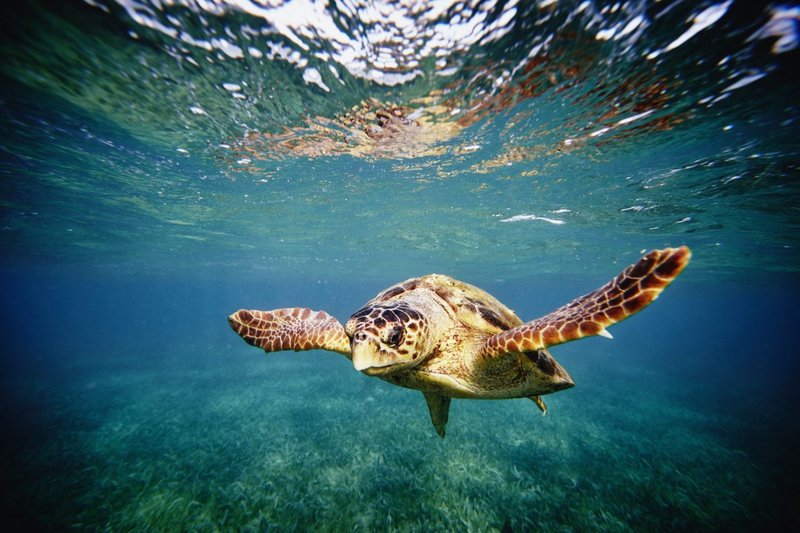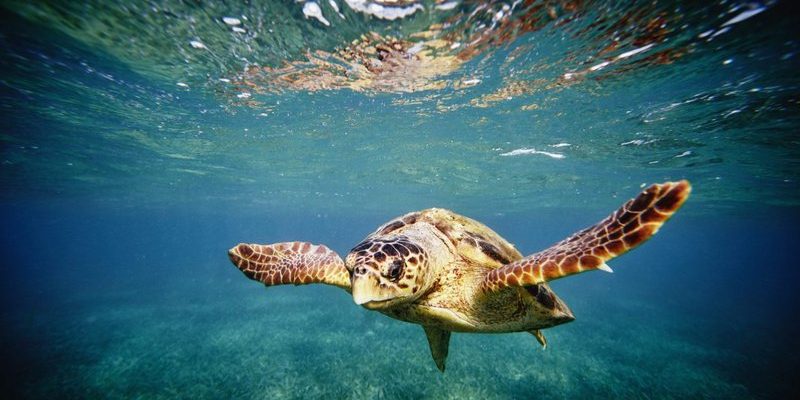
Hawksbill turtles are endangered, primarily due to habitat loss, illegal trade, and other human activities. This makes the question of safe interaction all the more relevant. Picture a world where we can appreciate and learn from these turtles without putting them at risk. It’s a bit like understanding the balance of nature while having the chance to experience its wonders up close. We’ll explore the ways humans can interact with Hawksbills safely while respecting their natural habitat.
Understanding Hawksbill Turtles
Hawksbill turtles are fascinating creatures that play a crucial role in maintaining the health of coral reefs. They primarily feast on sponges, which helps control sponge populations and allows coral to thrive. If you think about it, Hawksbills are like gardeners of the sea, tending to their underwater gardens. Sadly, their population has declined dramatically, so learning about their behavior and needs is essential for safe interactions.
These turtles are usually found in tropical coral reefs, where they can be seen swimming gracefully, often accompanied by schools of colorful fish. When you see a Hawksbill up close, you might notice its sharp beak — it’s perfectly designed for snipping sponges from rocks. Hawksbills are known for their distinct patterns and colors on their shells, making each one unique. This beauty, however, has led to the illegal trade of their shells, which is another reason to prioritize their safety during any interaction.
Unfortunately, Hawksbill turtles face threats not only from humans but also from pollution and climate change. Rising ocean temperatures can affect their nesting sites and food sources. By understanding these challenges, we can promote safe ways to appreciate these turtles without contributing to their decline.
Safe Practices for Interacting with Hawksbill Turtles
If you’re lucky enough to encounter a Hawksbill turtle, it’s important to remember that they are wild animals. Here are some practices to ensure safe and respectful interactions:
- Keep your distance: Always maintain a respectful distance. This allows the turtle to feel safe and not threatened.
- Avoid touching: While it might be tempting to reach out and pet them, touching can cause stress and harm to the turtle.
- Do not feed them: Feeding wild turtles can alter their natural behaviors and make them reliant on human food.
- Limit noise: Keep noise levels low to avoid startling them. They thrive in calm environments.
By following these guidelines, you can enjoy the beauty of Hawksbills without disturbing their natural behaviors. Honestly, there’s something magical about simply observing them in their habitat. It’s like watching a live performance that you know is part of a much larger story unfolding in the ocean.
Responsible Tourism and Hawksbill Conservation
Tourism can be a double-edged sword for Hawksbill turtles. On one hand, it brings awareness and funding for conservation efforts; on the other, it can lead to overcrowding and habitat degradation. Responsible tourism is crucial for protecting these gorgeous creatures. Look for eco-friendly tours or organizations that prioritize the well-being of marine life.
When choosing a tour operator, consider those that follow these principles:
- Guided tours: These should include education about marine life and conservation efforts.
- Small group sizes: Fewer people mean less stress for the turtles.
- Marine protected areas: Tours that prioritize locations designated as safe spaces for Hawksbills are ideal.
When people engage in responsible tourism, they contribute to the protection of Hawksbill turtles and their habitats. You’ll not only enjoy the experience but also support initiatives that help conserve these animals.
The Role of Education in Conservation
Education plays a vital role in the conservation of Hawksbill turtles. The more we know about these creatures, the better we can advocate for their protection. Many organizations and local communities offer workshops, talks, and programs to educate people about the importance of Hawksbills.
Honestly, when you understand the challenges these turtles face, it’s easier to appreciate why they need our help. Workshops often include hands-on activities, such as beach clean-ups and snorkeling adventures, providing a way to connect with nature while learning about marine conservation.
Participating in educational programs can change the way you view Hawksbills and the ocean as a whole. You might even discover ways to get involved in local conservation efforts, making a meaningful impact on these beautiful turtles’ lives.
How Technology Aids in Hawksbill Turtle Conservation
Technology is making waves in the world of wildlife conservation, and Hawksbill turtles are no exception. Researchers are using tools like satellite tracking, underwater drones, and even social media to study and protect these turtles better.
For instance, satellite tracking allows scientists to monitor Hawksbill migrations, understanding their travel patterns and breeding habitats. This information is crucial for creating marine protected areas where they can thrive. Imagine knowing exactly where these turtles go and what they need to survive!
Additionally, underwater drones can help researchers observe turtles without disturbing them. It’s a bit like giving a turtle a private screening of its own life! By utilizing technology, we can gather valuable data on their behavior and health, leading to better conservation strategies.
What You Can Do to Help Hawksbill Turtles
You don’t have to be a marine biologist to make a difference in protecting Hawksbill turtles. Here are some simple steps you can take:
- Support conservation organizations: Donate or volunteer with groups working to protect these turtles and their habitats.
- Reduce plastic use: Participate in beach clean-ups and limit your use of single-use plastics that can end up in the ocean.
- Educate others: Share what you’ve learned about Hawksbill turtles with friends and family to raise awareness.
- Choose sustainable seafood: This helps to reduce fishing practices that harm turtles and their habitats.
By taking these actions, you play a role in the larger effort to protect marine life. Remember, every little bit counts, and together, we can make a significant impact on the future of Hawksbill turtles.
In the end, interacting with Hawksbill turtles can be a safe and enriching experience as long as we approach it with respect and awareness. These turtles are not just beautiful creatures; they are essential to the health of our ocean ecosystems. By practicing responsible tourism, supporting conservation efforts, and educating ourselves and others, we can appreciate the majesty of Hawksbill turtles while ensuring their survival for generations to come.
So, whether you’re snorkeling alongside a Hawksbill or simply sharing what you’ve learned, remember that you’re part of a larger story, one that involves not just humans but the entire marine world. Together, we can ensure that these magnificent turtles continue to thrive in their natural habitat.

